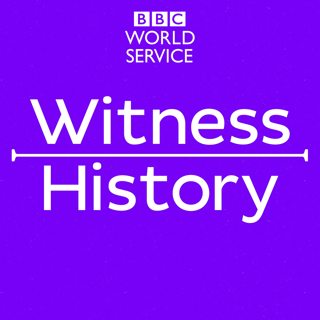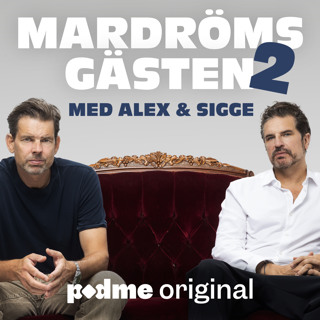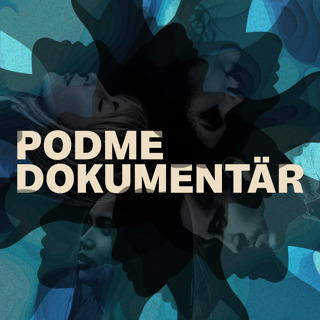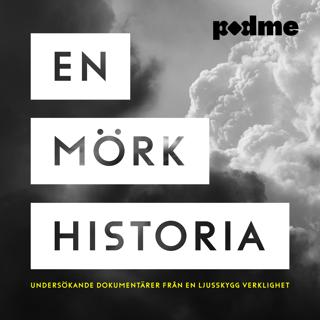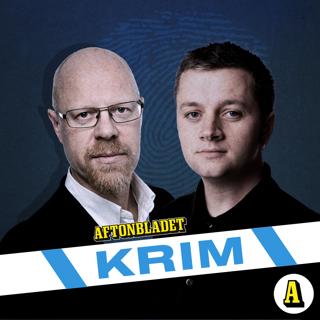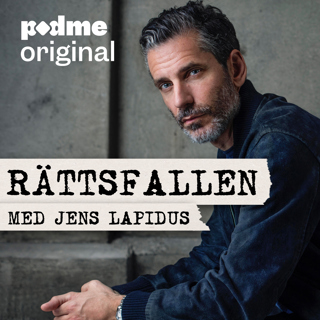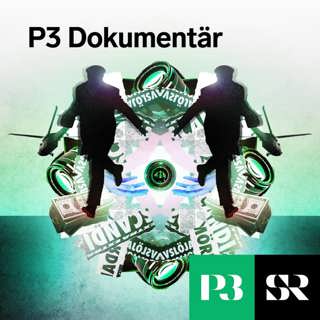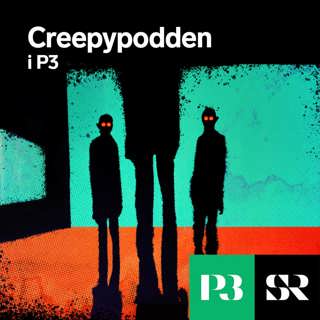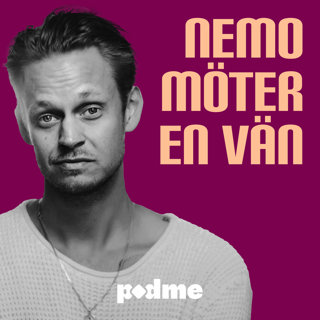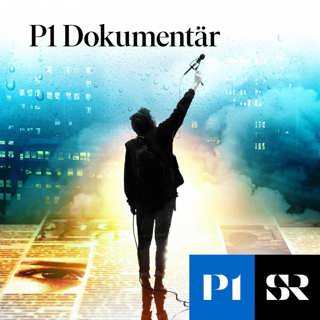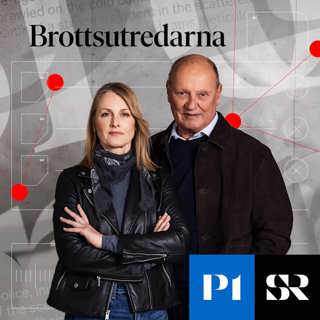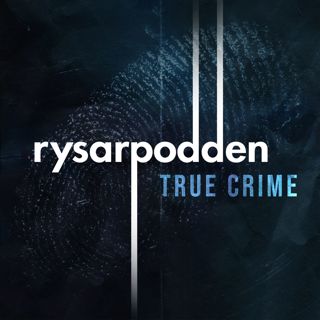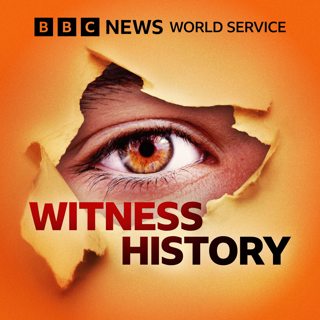
Orson Welles broadcasts The War of the Worlds
The night before Halloween in 1938, 23-year-old Orson Welles and his Mercury Theatre on the Air performed a radio adaptation of HG Wells’s The War of the Worlds.It would become one of the most notorious radio broadcasts in history. In their own words, from the BBC's archive, Orson Welles, producer John Houseman and writer Howard Koch describe how it was "a very boring show" until they had the idea to update the science fiction story, using reportage and the name of a real location in New Jersey in the United States, as the scene for where aliens from Mars would invade.Up to six million people tuned in, most of whom had no idea that what they were listening to was fictional. It prompted mass panic. Orson Welles delights in recalling "Suddenly everyone started driving at 125 miles per hour," saying, "I'm going to the hills". Produced and presented by Josephine McDermott.Eye-witness accounts brought to life by archive. Witness History is for those fascinated by the past. We take you to the events that have shaped our world through the eyes of the people who were there. For nine minutes every day, we take you back in time and all over the world, to examine wars, coups, scientific discoveries, cultural moments and much more. Recent episodes explore everything from the death of Adolf Hitler, the first spacewalk and the making of the movie Jaws, to celebrity tortoise Lonesome George, the Kobe earthquake and the invention of superglue. We look at the lives of some of the most famous leaders, artists, scientists and personalities in history, including: Eva Peron – Argentina’s Evita; President Ronald Reagan and his famous ‘tear down this wall’ speech; Thomas Keneally on why he wrote Schindler’s List; and Jacques Derrida, France’s ‘rock star’ philosopher. You can learn all about fascinating and surprising stories, such as the civil rights swimming protest; the disastrous D-Day rehearsal; and the death of one of the world’s oldest languages.(Photo: Orson Welles rehearsing The War of the Worlds. Credit: Bettmann/Getty Images)
30 Okt 10min

Srebrenica massacre
It's 30 years since a massacre of Bosnian Muslims during the war in the former Yugoslavia. The Srebrenica massacre, recognised by the United Nations as a genocide, was the shocking climax of the war in Bosnia.In 2014, Louise Hidalgo talked to Hasan Nuhanović whose father, brother and mother were among the 8,000 Bosnians killed.Eye-witness accounts brought to life by archive. Witness History is for those fascinated by the past. We take you to the events that have shaped our world through the eyes of the people who were there. For nine minutes every day, we take you back in time and all over the world, to examine wars, coups, scientific discoveries, cultural moments and much more. Recent episodes explore everything from the death of Adolf Hitler, the first spacewalk and the making of the movie Jaws, to celebrity tortoise Lonesome George, the Kobe earthquake and the invention of superglue. We look at the lives of some of the most famous leaders, artists, scientists and personalities in history, including: Eva Peron – Argentina’s Evita; President Ronald Reagan and his famous ‘tear down this wall’ speech; Thomas Keneally on why he wrote Schindler’s List; and Jacques Derrida, France’s ‘rock star’ philosopher. You can learn all about fascinating and surprising stories, such as the civil rights swimming protest; the disastrous D-Day rehearsal; and the death of one of the world’s oldest languages.(Photo: Graves of those killed in the Srebrenica massacre. Credit: Pierre Crom/Getty Images)
29 Okt 10min

The invention of the balloon-expandable stent
An estimated 2 million stents are implanted into people’s hearts around the world each year – making it one of the key treatments for heart disease. The treatment was invented by Argentinian doctor Julio Palmaz, who credits a piece of metal being left by a construction worker in his home as inspiration for the structure of the stent. Collaborating with a US Army cardiologist and getting funding from the owner of a fast-food chain and a pharmaceutical giant; the coronary stent was approved for use in human beings in the 1990s. Julio Palmaz speaks to Tim O’Callaghan about his invention. Eye-witness accounts brought to life by archive. Witness History is for those fascinated by the past. We take you to the events that have shaped our world through the eyes of the people who were there. For nine minutes every day, we take you back in time and all over the world, to examine wars, coups, scientific discoveries, cultural moments and much more. Recent episodes explore everything from the death of Adolf Hitler, the first spacewalk and the making of the movie Jaws, to celebrity tortoise Lonesome George, the Kobe earthquake and the invention of superglue. We look at the lives of some of the most famous leaders, artists, scientists and personalities in history, including: Eva Peron – Argentina’s Evita; President Ronald Reagan and his famous ‘tear down this wall’ speech; Thomas Keneally on why he wrote Schindler’s List; and Jacques Derrida, France’s ‘rock star’ philosopher. You can learn all about fascinating and surprising stories, such as the civil rights swimming protest; the disastrous D-Day rehearsal; and the death of one of the world’s oldest languages.(Photo: Julio holding a stent. Credit: Julio Palmaz)
28 Okt 10min

Death of a priest
The 1977 murder of Father Rutilio Grande sent shockwaves through El Salvador. The 48-year-old Jesuit priest was an outspoken champion of the poor in the deeply divided central American nation. In the immediate aftermath of his murder, the Archbishop of San Salvador, Oscar Romero, took the unprecedented step of holding just one single mass, ordering all other churches in his archdiocese to cancel theirs. Romero also refused to attend any government functions. Father Grande was one of the first priests to be killed by security forces in the years leading up to the bloody Salvadoran civil war. His murder marked a turning point as the church became increasingly involved in promoting social justice, and other priests became more outspoken against the government's repression of dissent. Mike Lanchin has been hearing from Gabina Dubon, who worked with Father Grande in his rural parish, and to theologian and author, SisterAna Maria Pineda. This is a CTVC production for BBC World Service.Eye-witness accounts brought to life by archive. Witness History is for those fascinated by the past. We take you to the events that have shaped our world through the eyes of the people who were there. For nine minutes every day, we take you back in time and all over the world, to examine wars, coups, scientific discoveries, cultural moments and much more. Recent episodes explore everything from the death of Adolf Hitler, the first spacewalk and the making of the movie Jaws, to celebrity tortoise Lonesome George, the Kobe earthquake and the invention of superglue. We look at the lives of some of the most famous leaders, artists, scientists and personalities in history, including: Eva Peron – Argentina’s Evita; President Ronald Reagan and his famous ‘tear down this wall’ speech; Thomas Keneally on why he wrote Schindler’s List; and Jacques Derrida, France’s ‘rock star’ philosopher. You can learn all about fascinating and surprising stories, such as the civil rights swimming protest; the disastrous D-Day rehearsal; and the death of one of the world’s oldest languages.(Photo: Father Rutilio Grande. Credit: Camilo Freedman/APHOTOGRAFIA/Getty Images)
27 Okt 10min

The man who invented the scratch card
In May 1974, scratch cards went on sale for the first time in the US State of Massachusetts. Free giveaway and coupon games from stores had been commonplace across the USA during the 1950s and '60s – but players could easily cheat. The mathematician John Koza was hired to make the games more secure; he succeeded in making the modern-day scratch card. He tells Johnny I’Anson how he convinced the state-run lotteries to use his invention to offer cash prizes. Eye-witness accounts brought to life by archive. Witness History is for those fascinated by the past. We take you to the events that have shaped our world through the eyes of the people who were there. For nine minutes every day, we take you back in time and all over the world, to examine wars, coups, scientific discoveries, cultural moments and much more. Recent episodes explore everything from the death of Adolf Hitler, the first spacewalk and the making of the movie Jaws, to celebrity tortoise Lonesome George, the Kobe earthquake and the invention of superglue. We look at the lives of some of the most famous leaders, artists, scientists and personalities in history, including: Eva Peron – Argentina’s Evita; President Ronald Reagan and his famous ‘tear down this wall’ speech; Thomas Keneally on why he wrote Schindler’s List; and Jacques Derrida, France’s ‘rock star’ philosopher. You can learn all about fascinating and surprising stories, such as the civil rights swimming protest; the disastrous D-Day rehearsal; and the death of one of the world’s oldest languages.(Photo: The original scratch card. Credit: Massachusetts State Lottery)
24 Okt 10min

GLP-1: A breakthrough for diabetes and obesity
In the 1980s, scientists made a discovery that would eventually lead to the development of drugs now used worldwide to treat diabetes and to help people manage obesity through weight loss injections.One of the key scientists behind this breakthrough was Svetlana Mojsov. She discovered that a hormone called GLP-1 (glucagon-like peptide-1) plays an important role in how our bodies respond to food. Svetlana’s work laid the foundation for a drug company to develop treatments based on GLP-1 — first for type 2 diabetes, and later for weight loss. She tells Gill Kearsley her story.Eye-witness accounts brought to life by archive. Witness History is for those fascinated by the past. We take you to the events that have shaped our world through the eyes of the people who were there. For nine minutes every day, we take you back in time and all over the world, to examine wars, coups, scientific discoveries, cultural moments and much more. Recent episodes explore everything from the death of Adolf Hitler, the first spacewalk and the making of the movie Jaws, to celebrity tortoise Lonesome George, the Kobe earthquake and the invention of superglue. We look at the lives of some of the most famous leaders, artists, scientists and personalities in history, including: Eva Peron – Argentina’s Evita; President Ronald Reagan and his famous ‘tear down this wall’ speech; Thomas Keneally on why he wrote Schindler’s List; and Jacques Derrida, France’s ‘rock star’ philosopher. You can learn all about fascinating and surprising stories, such as the civil rights swimming protest; the disastrous D-Day rehearsal; and the death of one of the world’s oldest languages.(Photo: Injection pens. Credit: Carsten Snejbjerg/Bloomberg via Getty Images)
23 Okt 10min

The UK’s first black-owned music studio
Sonny Roberts, a Jamaican carpenter, arrived in Britain in the 1950s. It was a time of racial disharmony, including the Notting Hill riots and the murder of Kelso Cochrane. In this tense atmosphere, black musicians struggled to make a name for themselves. Then in 1961, Roberts set up the UK’s first black-owned music studio, Planetone, in a basement in Kilburn. The studio gave the Caribbean community a musical platform. In later years, Roberts produced Nigerian band Nkengas’ album, Destruction - one of the earliest examples of Afrobeat in the UK. His 1987 production of Judy Boucher's Can't Be with You Tonight reached number two in the UK Singles Chart, beaten only by Madonna. Roberts laid the foundations for black British music. Ben Henderson speaks to his daughter, Cleon Roberts.This programme contains outdated and offensive language.Eye-witness accounts brought to life by archive. Witness History is for those fascinated by the past. We take you to the events that have shaped our world through the eyes of the people who were there. For nine minutes every day, we take you back in time and all over the world, to examine wars, coups, scientific discoveries, cultural moments and much more. Recent episodes explore everything from the death of Adolf Hitler, the first spacewalk and the making of the movie Jaws, to celebrity tortoise Lonesome George, the Kobe earthquake and the invention of superglue. We look at the lives of some of the most famous leaders, artists, scientists and personalities in history, including: Eva Peron – Argentina’s Evita; President Ronald Reagan and his famous ‘tear down this wall’ speech; Thomas Keneally on why he wrote Schindler’s List; and Jacques Derrida, France’s ‘rock star’ philosopher. You can learn all about fascinating and surprising stories, such as the civil rights swimming protest; the disastrous D-Day rehearsal; and the death of one of the world’s oldest languages.(Photo: Sonny Roberts in 1982. Credit: David Corio/Redferns via Getty Images)
22 Okt 9min

Wangari Maathai: The first African woman to win the Nobel Peace Prize
In 2004, the Kenyan ecologist Wangari Maathai became the first African woman to win the Nobel Peace Prize.Wangari Maathai founded the Green Belt Movement in 1977, a grass-roots organisation empowering local women to plant trees. It spread to other African countries and contributed to the planting of over 30 million trees. In 2016, Alex Last spoke to her daughter, Wanjira.Eye-witness accounts brought to life by archive. Witness History is for those fascinated by the past. We take you to the events that have shaped our world through the eyes of the people who were there. For nine minutes every day, we take you back in time and all over the world, to examine wars, coups, scientific discoveries, cultural moments and much more. Recent episodes explore everything from the death of Adolf Hitler, the first spacewalk and the making of the movie Jaws, to celebrity tortoise Lonesome George, the Kobe earthquake and the invention of superglue. We look at the lives of some of the most famous leaders, artists, scientists and personalities in history, including: Eva Peron – Argentina’s Evita; President Ronald Reagan and his famous ‘tear down this wall’ speech; Thomas Keneally on why he wrote Schindler’s List; and Jacques Derrida, France’s ‘rock star’ philosopher. You can learn all about fascinating and surprising stories, such as the civil rights swimming protest; the disastrous D-Day rehearsal; and the death of one of the world’s oldest languages.(Photo: Wangari Maathai. Credit: William F Campbell/Getty Images)
21 Okt 10min
